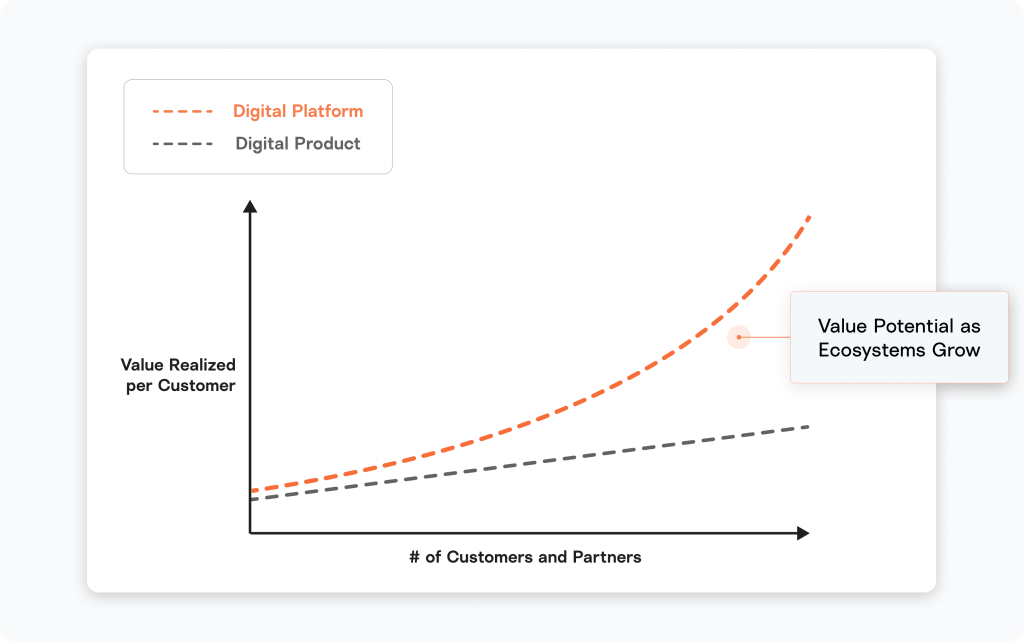Sinclair Schuller April 27, 2023
When we think of digital success, we often point to digital-first or cloud-first companies: companies that succeeded not despite existing businesses they ran, but rather, companies that succeeded by leveraging their own blank slate against incumbents in the industry they intended to take over. While no small feat, the challenges these companies faced were small when compared to the challenges faced by companies that don’t have a blank slate to work with. Existing companies going digital need to figure out how to navigate the complexity of running their existing business while leveraging digital innovation to block disruptors attacking their space. Lots has been written on this topic, so it’s not really the focus of this post. Instead, let’s focus on asking two questions:
- Are digital-first new entrants doing something that incumbents should learn from?
- Are there any discernible traits that make some incumbent companies more successful than others?
Despite the differences in the questions, their conclusions are the same: the risk in digital isn’t in pursuing a digital outcome, it’s in not pursuing it aggressively enough – in not having big digital ambitions.
How do we measure “big” or “ambitious?”
We measure the intended outcome of a digital strategy. If the outcome is to create value for customers through technology (software, cloud services, hardware) that complements the existing business, then digital ambitions are modest. If, however, the outcome is to use technology to (re)capture the ecosystem around a market in support of a re-invention of the business model, then it’s ambitious. The former is the goal of a digital product, the latter, a digital platform.

In the product case, the value each customer experiences is no different (or just marginally better) than the value that the previous customer experienced or the next will experience. In the platform case, each time a new constituent joins the ecosystem, unit value for all increases (as does the value that future customers will experience).
What does technology have to do with capturing ecosystems? Everything. The answer starts with the observation (and quasi-axiom) that every successful digital product becomes a digital platform.
Let’s take a look at the first question to better understand this notion.
Are digital-first new entrants doing something that incumbents should learn from?
Yes. By definition, they’re ambitious; they can’t come to market and compete with current market leaders head on. New entrants need to use technology to create speed and leverage. They understand that leverage comes from enabling both consumers and producers of applications to create value in their ecosystem, supplanting incumbents with value that undermines traditional business models. Most digital-first success stories started as digital products, but became digital platforms. They created technology and business frameworks that either comprehensively reinvented their business model and/or allowed other technology providers to rapidly build new digital products built around them, thereby causing an explosive increase in value for digital consumers without directly incurring the cost.
So what? Of course if “a digital product becomes successful, people will start to integrate and the new entrant would win an ecosystem!” While that’s true by definition, the interesting part is that many, if not most, of these digital-first companies started off having that end-state ambition guide their digital product creation and delivery. They built their offerings knowing and planning for their evolution to a digital platform.
Are there any discernible traits that make some incumbent companies more successful than others?
Another yes. In this case, incumbents who are succeeding with digital are doing two things:
- They’re looking for innovative ways to capitalize on their massive asset base (including brand).
- Their ambition is to deliver a comprehensive digital platform, not just digital products.
Number 2 is exactly the same fundamental quality we see in successful digital-first companies. These incumbents understand that to recapture mindshare and defend against new entrants, they need to aggressively create an ever-growing value stream for their customers. They might release digital products to start, but they anchor their ambitions against a much bigger play – a platform play where they can tackle new use cases quickly, incorporate their customers’ behavior into their digital presence, and create frameworks to help other technology providers drive rapid increases in value.
Conclusion
In order to think in a digitally ambitious way, enterprises need to either build platforms out of the gate, or build their digital products in a “platform-aware” way. Platform-aware means that those products need to be extensible in the right way so that third parties can eventually build apps around those offerings. It’s thinking about alignment with things like:
- Entitlements management
- Tenancy and cross-tenancy concerns (including tenant management)
- Access controls
- Scalability
- Ecosystem monetization
All enterprises have constraints, but big ambitions and a well-implemented digital platform or platform-aware digital product can lead to massive success. It’s less risky than you might think if you have a team that understands platform alignment and go-to-market. It’s popular these days to say “every company is a software company” but the big winners will be platform companies.
Note: This post was originally published in December 2018 and has been updated.


